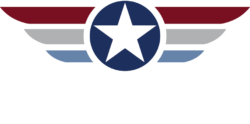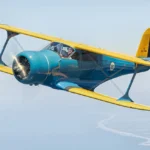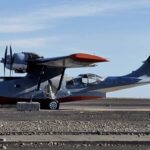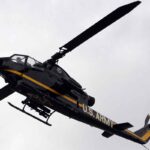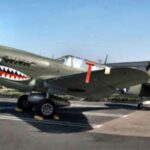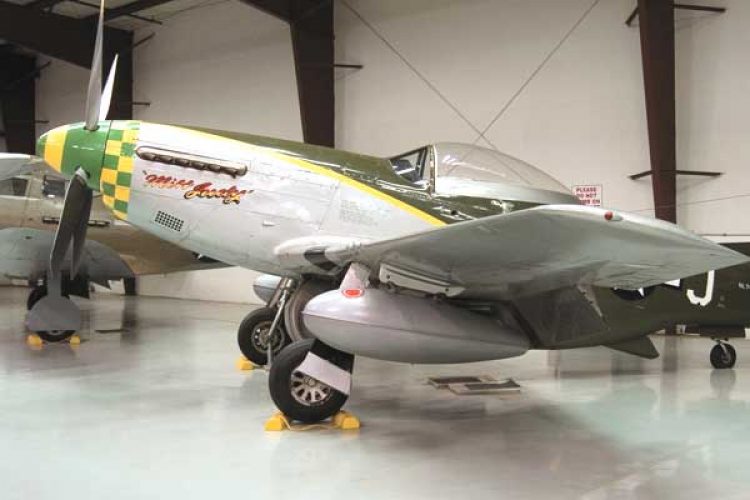
Service History of 44-74910
- Delivered: July 10, 1945
- July 1945 – 2116th AAF Base Unit (ATC), Napier AAF, AL
- Nov 1945 – 2225th AAF Base Unit (ATC), Moody AAF, GA
- Mar 1946 – 2537th AAF Base Unit (ATC), Perrin AAF, TX
- Nov 1946 – San Antonio Air Material Center, Kelly AAF, TX
- Jan 1948 – 195th Fighter Squadron (ANG), Van Nuys AP, CA
- Jun 1948 – 188th FS (ANG), Kirtland AFB, NM
- Feb 1951 – 188th FS Assigned to Air Defense Command
- May 1951 – 188th FS (ADC), Long Beach AFB, CA
- Nov 1952 – 354th FS (ADC), Long Beach AFB, CA
- Feb 1953 – To Oxnard AFB, CA
- June 1953 – 440th FS (ADC) Geiger AFB, WA with a deployment to McChord AFB, WA
- Sept 1953 – 116th FS (ANG) Geiger AFB, WA
- Jan 1954 – 179th FS (ANG) Duluth AP, MN
- Aug 1954 – 112th Fighter-Bomber Squadron (ANG) Akron-Canton AP, OH
- Aug 1956 Sacramento Air Materiel Are, McClellan AFB, CA
- July 1959 – Dropped from inventory by commercial sale
North American designed and built the P-51 in an unbelievable 117 days. An exceptional long range bomber escort and a fast and furious dog fighter, the P-51 qualified 281 allied pilots as Aces, second only to the Hellcat with 307 Aces.
Most P-51s were manufactured in Inglewood, CA and tested over Mines Field, now LAX. The answer to a fighter pilot’s dream, the Mustang had the ability to fly farther and faster than any other combat aircraft of WWII.
The D model sported a new bubble canopy, six .50 caliber Browning machine guns and the new Merlin engine improved its high altitude performance. Two other developments improved the capabilities of the P-51, the G-Suit, which applied pressure to the lower body to increased blood flow to the head, and the K-14 gyroscopic gun sight.
This P-51 was a well known racer and won a string of victories in the Bendix Air Races. It was procured by Yanks in 1987.
